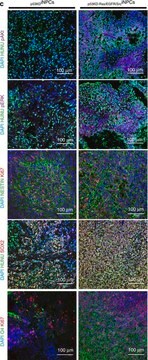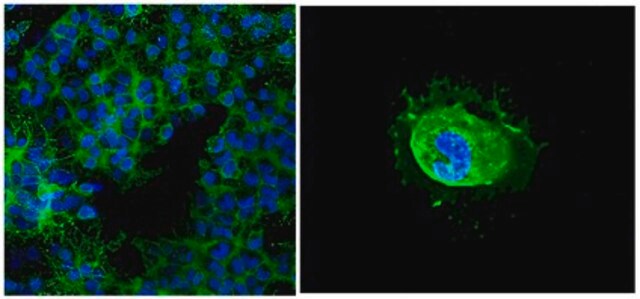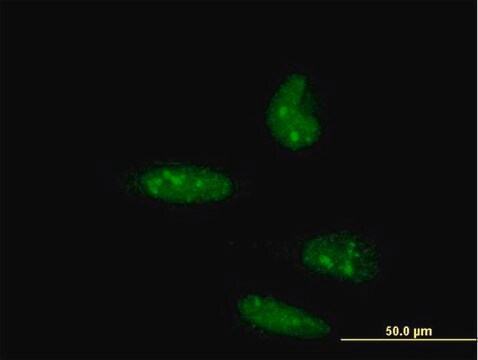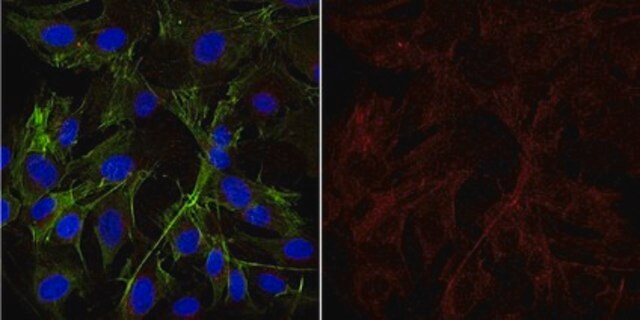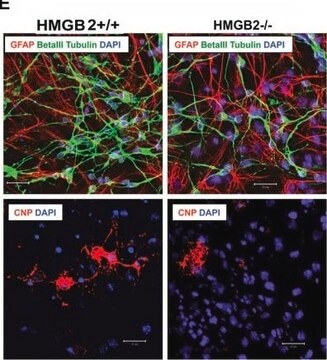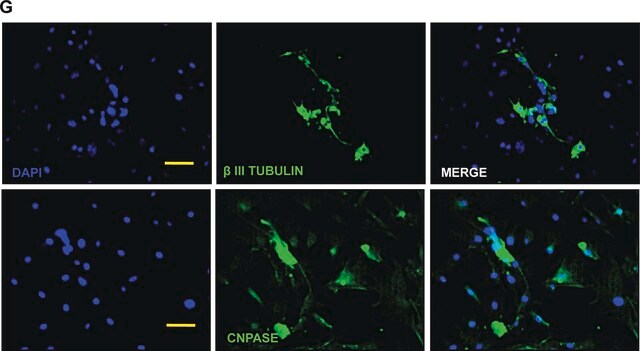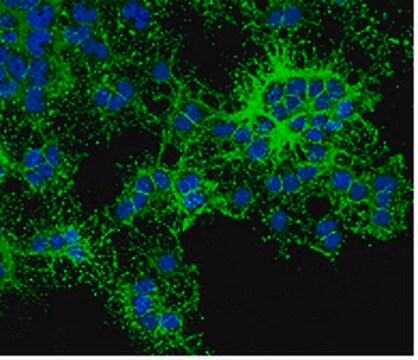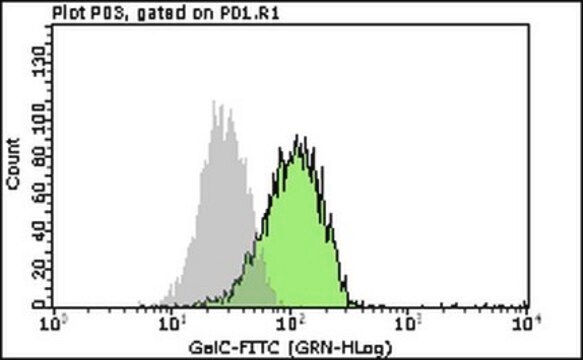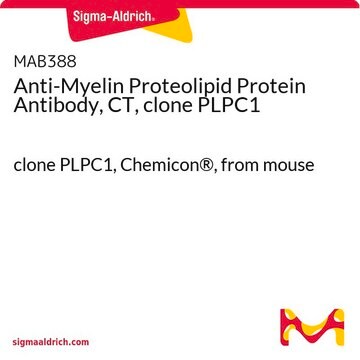MAB342
Anti-Galactocerebroside Antibody, clone mGalC
clone mGalC, Chemicon®, from mouse
Synonym(s):
Galactoceramide, Galactocerebroside, Galactosylceramide, GalC
About This Item
Recommended Products
biological source
mouse
Quality Level
antibody form
purified antibody
clone
mGalC, monoclonal
species reactivity
mouse, human, rabbit, bovine, chicken, rat
manufacturer/tradename
Chemicon®
technique(s)
ELISA: suitable
immunocytochemistry: suitable
immunohistochemistry: suitable
isotype
IgG3
shipped in
dry ice
target post-translational modification
unmodified
General description
Specificity
Immunogen
Application
0.5-10 μg/mL of a previous lot was used on formalin fixed frozen sections of a prevous lot. Can not be used on paraffin embedded tissue sections since the antigen is denatured during embedding and paraffin removal.
Immunocytochemistry:
0.5-10 μg/mL of a previous lot was used on 4% paraformaldehyde, acetic acid or ethanol fixed cultured cells.
ELISA:
A previous lot was used on purified galactocerebrosides.
Optimal working dilutions must be determined by the end user.
Neuroscience
Neuronal & Glial Markers
Physical form
Storage and Stability
Analysis Note
Neonatal cortex
Other Notes
Legal Information
Disclaimer
Storage Class
12 - Non Combustible Liquids
wgk_germany
WGK 1
flash_point_f
Not applicable
flash_point_c
Not applicable
Certificates of Analysis (COA)
Search for Certificates of Analysis (COA) by entering the products Lot/Batch Number. Lot and Batch Numbers can be found on a product’s label following the words ‘Lot’ or ‘Batch’.
Already Own This Product?
Find documentation for the products that you have recently purchased in the Document Library.
Our team of scientists has experience in all areas of research including Life Science, Material Science, Chemical Synthesis, Chromatography, Analytical and many others.
Contact Technical Service